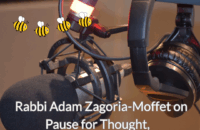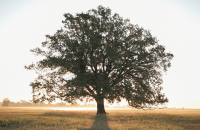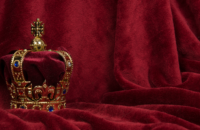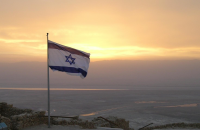The Menorah: spanning the Entire Zionist spectrum from Herzl to HaRav Kook
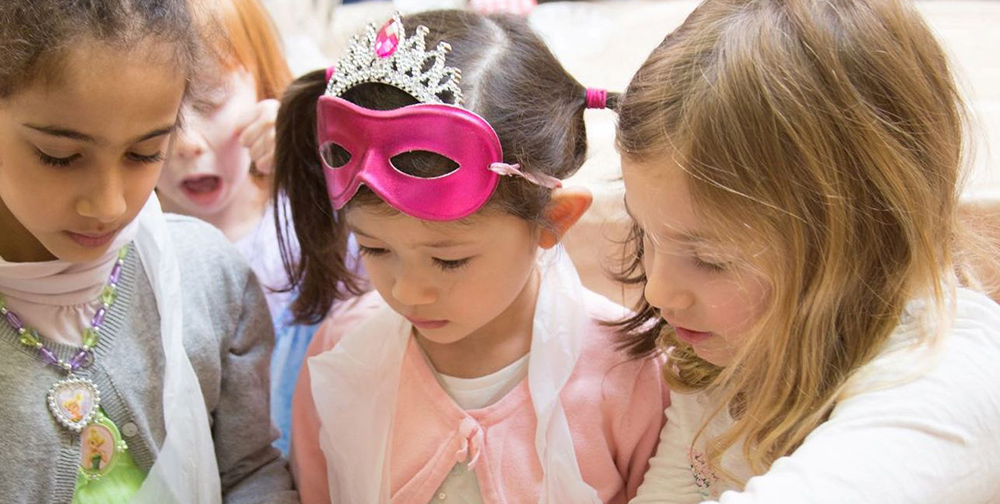
On Chanukah in the year 1897, shortly after the First Zionist Congress was held, Theodore Herzl wrote an article called “The Menorah”, in which he compared himself to the shamash that lights and wakes Jews of all affiliations.
Recent research on Herzl and his family points to the bond between Judaism and Zionism that was the cornerstone of his Zionist thought. Herzl was not raised as an Orthodox Jew nor did he become such, yet the shift in his attitude towards Jews of different stripes represented a move away from the assimilationist stance of his youth, when he was alienated from Judaism.
Unlike the modern Jewish thought that preceded Zionism, in which each stream kept unto itself and was hostile towards others, Zionism revived the sense that what the secular, Reform, Orthodox and Haredi (ultra-Orthodox) Jews of all sects had in common was greater than their differences, and therefore compromise for the sake of shared existence was both possible and necessary. Herzl was joined in this view by his nemesis, Ahad Ha’am, as well as by social Zionists such as A.D. Gordon and Berl Katznelson. All acknowledged that every Jewish group contributes something to the nation, and that a united Jewish People is greater than the sum of its parts.
It is worth noting that two years before writing “The Menorah,” the visionary of the Jewish State lit a Christmas tree with his children. The article expresses Herzl’s belief that the meaning of Zionism is “the return to Judaism first” – in awareness and education of one’s children – “before the return to the Land.” “The Menorah” opens with Herzl presenting himself in the third person, as in a fable. He describes how he awoke to the feeling of responsibility towards his people, the Jewish People, in the wake of modern antisemitism. The article ends on a moving note, as Herzl perceives the chanukiah (menorah) as a symbol of Jewish unity.
“The eighth night arrived, when all the candles were lit – eight plus the loyal shamash (servant) whose job is to light the others… In our friends’ eyes the occasion became a parable for the kindling of a whole nation. First one candle; it is still dark and the solitary light looks gloomy. Then it finds a companion, then another, and yet another. The darkness must retreat. The young and the poor are the first to see the light; then the others join in, all those who love justice, truth, liberty, progress, humanity and beauty. When all the candles are ablaze everyone must stop in amazement and rejoice at what has been wrought. And no office is more blessed than that of a servant of light.”
For Herzl, apparently, each candle represents a group within the Jewish People that at one time or another will join the process of coalescence of the entire nation in its Land, and from this unified entity will spread a light unto the world. His words imply that the different values represented by the different candles reflect different political bodies within the Jewish People. Herzl died at age 44. His Zionist activity lasted only ten years (!), beginning in 1894 with an awareness of the problem of modern antisemitism that was born of successful integration of Jews in their home countries, and continuing until his death in 1904. This decade of endeavour testifies to the spiritual strength of Herzl and of the Jewish leaders of the time, and to what the soul of man can achieve.
The manner in which Herzl’s secular philosophy found its way into the thought of Rabbi Abraham Isaac Kook (1865-1935), a founder of religious Zionism who became the first Ashkenazi chief rabbi of the Jewish Yishuv (the pre-State Jewish community), is fascinating, on two levels: the fact that a liberal Jew such as Herzl could impact, through the vehicle of Zionism, upon the thought of a renowned Orthodox rabbi; and the addition of layers to the idea of the Chanukah menorah as a symbol of the nation.
Rav Kook, writing a spiritual exposition of the blessing over the Chanukah candles, explained that the word chanukiah is derived from the word for ‘educate’ (hanach). The chanukiah teaches the Jewish People through illustration of “the lights that are necessary to the nation: the light of Torah, of prophecy, of wisdom, of justice, of heroism, of joy, of compassion, of love…”
It is interesting that Rav Kook mentions values not mentioned by Herzl: Torah, compassion, joy, love. Clearly, he has in mind diverse groups who are dedicated to various values. He reckons not only Jews who are committed to enlightenment and justice, but also those whose priorities are Torah and charity. Rav Kook was chosen for the office of Chief Rabbi because of his public commitment to Zionism, and he toiled to bridge the chasm between haredim and secular Jews, and between the political right and left in the Yishuv. Thus, he wrote, “The most essential blessing is the blessing for peace, and peace will come in the future when it will become clear that all of the different lights share a common root, and are really one single light.”
The lesson of this is that national unity is a great and lofty value; and even though we today witness the ingathering of the exiles in Israel, full unity will be achieved only with the advent of the Messiah. Yet Rav Kook believes that we are on the road towards this longed-for goal.
In retrospect, one can only be amazed at the depth of meaning that these words still hold, over a hundred years later. So much has changed, and so great have been the achievements of the Jewish People and the State of Israel in the last century, and this despite the catastrophes we have faced. Still, civil strife abounds. It is expressed mainly in the written and spoken word, and sometimes in deeds. It is psychologically challenging to acknowledge, as Herzl and Rav Kook did, a kernel of truth in the ideas of the opposite camp. It is not easy to appreciate the plurality of opinions among the Jewish people or to understand the value of compromise. But we need only look back at these two Zionist leaders, who were, religiously speaking, in two opposite camps. They remind us to see in the Chanukah lights the way towards the blessing of peace; peace that is a reconciliation of differences, first and foremost within ourselves.
English translation by Penina Goldschmidt
Rabbi Dr Einat Ramon is a senior lecturer in Jewish Thought and Jewish Women’s Studies at the Schechter Institute of Jewish Studies.

